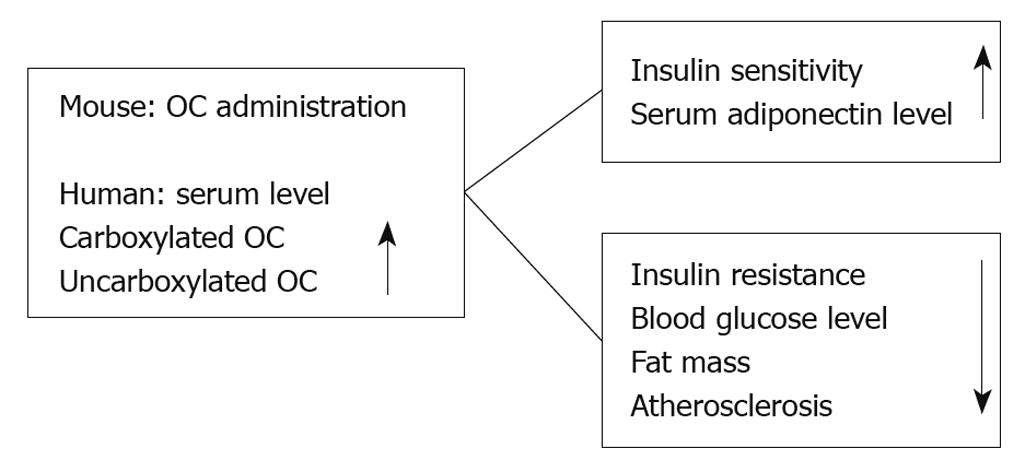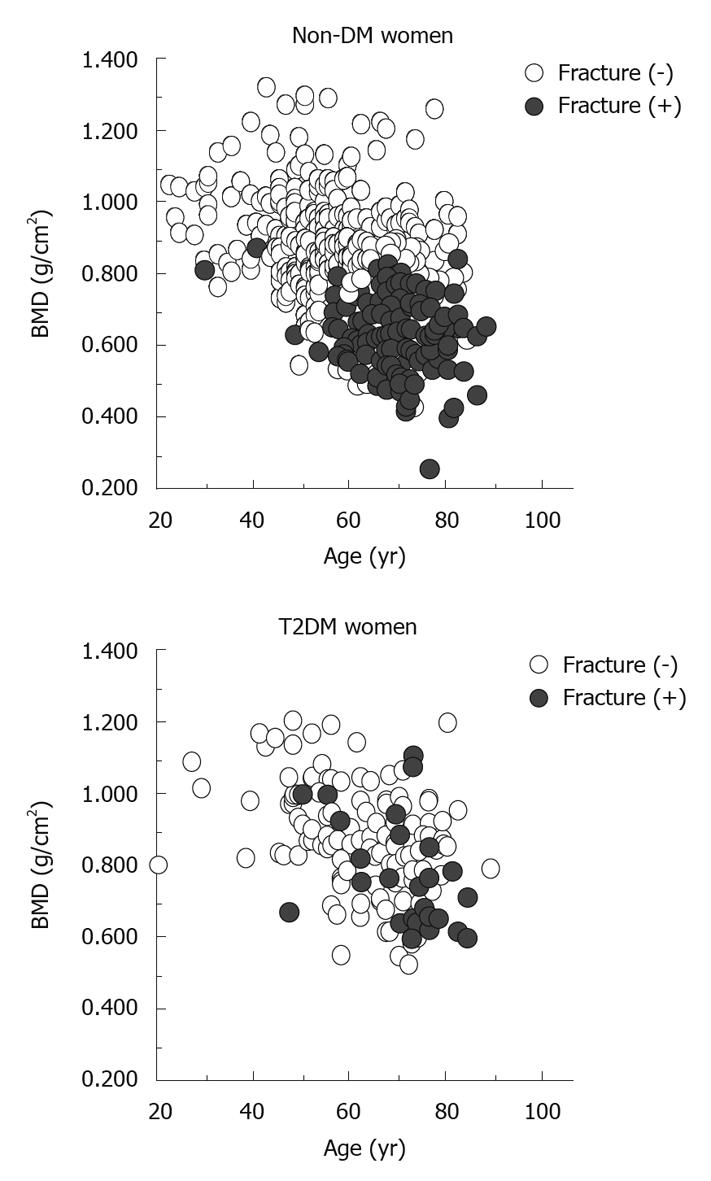Copyright
©2010 Baishideng Publishing Group Co.
Figure 1 When osteocalcin was administered to obese mice, it increased insulin secretion, and decreased blood glucose level, fat mass, and triglyceride level.
In humans, serum carboxylated and uncarboxylated osteocalcin levels were positively correlated with insulin sensitivity and adiponectin level, whereas they were negatively correlated with blood glucose level, fat mass, and atherosclerosis index. Thus, osteoporosis and diabetes are pathophysiologically related to each other through osteocalcin (OC) action in mice and humans.
Figure 2 Distribution of bone mineral density in subjects with and without vertebral fractures (black dots and open circles, respectively) as a function of age.
BMD: Bone mineral density; T2DM: Type 2 diabetes mellitus.
- Citation: Yamaguchi T. Bone fragility in type 2 diabetes mellitus. World J Orthop 2010; 1(1): 3-9
- URL: https://www.wjgnet.com/2218-5836/full/v1/i1/3.htm
- DOI: https://dx.doi.org/10.5312/wjo.v1.i1.3










